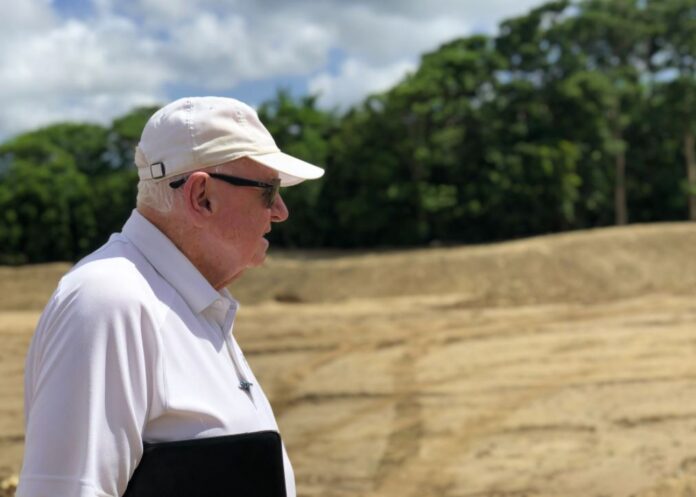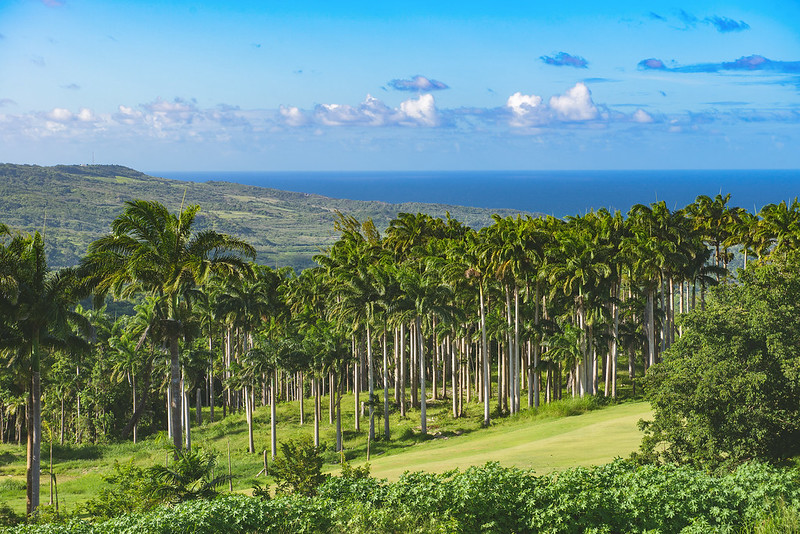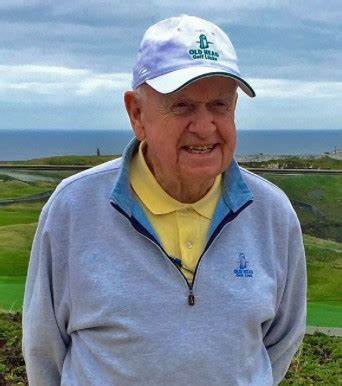
Golf writer Bill Sangster recently had an opportunity to interview Beverly, Mass-native Ron Kirby, regarding his career and his latest golf course design at Apes Hill Barbados (apeshillbarbados.com).
Ron Kirby knew from a young age he wanted to make a career in the golf world. As a caddie, caddie master, and maintenance crew member at a private club north of Boston, Ron gained all the incentives he needed to stay involved with the sport of golf. After graduating from the University of Massachusetts–Stockbridge, Ron took a position as design associate with Dick Wilson, for whom he worked until 1963. Ron then served under Robert Trent Jones, Sr. as a design associate on courses in the United States, Europe, and the Caribbean.
Having gained extensive experience in golf course design and construction, Ron founded his own design firm in 1970. Fellow architect Gary Player served as a consulting partner in the firm, and the team’s projects spanned the globe. Eventually, Ron sold his firm to Golden Bear, Inc. and joined Nicklaus Design Services as overseer of all European projects. Today, Ron is temporarily retired from the Nicklaus organization, but he is retained by various firms as a special consultant. With a five–decade career under his belt, Ron has garnered the reputation as one of the most respected and appreciated golf course designers in the industry. His talent has been used to create courses in a lengthy list of countries that includes Ireland, Japan, South Africa, Italy, France, Denmark, Germany, Spain and Austria, and he is still involved with international projects today.

NEG: What made you decide to get into golf design?
Ron Kirby: My career began with a talent I had for sketching when I was a teenager, just north of Boston. If you had the means, you could get to the Museum of Fine Arts for free art lessons on Saturday mornings. My brother and I would ride the subway to get my art lesson, so I knew how to sketch and handle a brush. Later I won a caddie scholarship, and I went to greenkeeper school.
When it snowed in the winters, I went to Florida – where my dad had a club pro job – and I realised that the movie stars in golf were the course designers. There was a centrefold in Sports Illustrated with two architects who were the flavour of the month: Robert Trent Jones and Dick Wilson. They were superstars.
NEG: Define Ron Kirby’s style…
Ron: I’m just looking for fun, different holes to build. I look for a chance to make the short holes more exciting and I always want to make something that’s fair for the player. Because I was a greenkeeper, I want to build things that can be maintained, kept neat and manicured.
NEG: Tell us about the people you’ve worked with over the years. Who were the most influential and why?
Ron: Trent Jones was a visionary. He could take any piece of ground and he would get the best layout – he knew how to put the holes in the right position for the wind, the sun direction, and his routings were very good. Another thing I learned from working with Trent Jones is that he didn’t do it all. He did the layouts, but he had a team of people working for him. You need good staff. And I had a lot of good staff.
I’ve also worked with Jack Nicklaus, who would always get the best sites and the best budgets. Nicklaus was a finishing school in golf design because of his strategy. He knew what a golf ball could and couldn’t do.

NEG: What advice would you give other designers from what you’ve learned?
Ron: Respect the ground. Try and make your golf course fit. It’s a lot of fun being a golf course designer, but you’ve got to be patient to get the right assignments. I’m proud that I got a chance to put my two cents in. The best thing to do is get any job you can on a golf course – even pulling the carts out. I grew up on a golf course, and I’ve never worked anywhere else.
NEG: You have just completed work at Apes Hill in Barbados – what hole there most reflects your style?
Ron: The second, for sure. It was a par three; now we’ve got a two-way hole. We extended the green and moved the tees back. It was almost an unplayable par three: into the wind, uphill… nobody would love this hole, so you’d play two holes and already you didn’t like the course. We turned it into a really fun, friendly par four. You have a chance to get out of there smiling. I didn’t have to go too far to find a hole I would love.
NEG: How did you bring to Apes Hill what you learnt from designing Old Head?
Ron: Old Head is basically an island connected with a little isthmus at the gate. But you have almost 360° of cliffs, so you try to get as close to the cliffs as you could to use those features. When I saw Apes Hill, you’ve got some super vistas. You can look at two oceans in some places! So, I said, “all we’ve got to do here is make sure that players can take in the vistas”.
NEG: What is your message to everyone who is about to experience Apes Hill?
Ron: Well, if I could meet every one of them, I hope they would buy me a beer and say I did a good job. I want people to enjoy their game and want to come back again.

NEG: Over the years, what’s changed with sustainability and what has been done at Apes Hill?
Ron: Sustainability means don’t build anything that you can’t maintain. Number one was the bunkers – we couldn’t maintain those, so we’ve eliminated two thirds of the bunkers. That’s cut back on the maintenance of the bunkers, the sand and erosion, and of course the irrigation.
Zoysia grass is tolerant to drought, so we don’t have to keep pumping water on to keep it green and alive, it will maintain itself. We’ve taken away around 1,000 sprinklers, reducing irrigation by a third. Supply here is from a huge lake, which collects the mountain rainfall instead of letting it run off into the sea, millions of gallons.
NEG: There will also be a par 3 for kids and families. Tell us a bit about that…
Ron: We’ve taken inspiration from some of the world’s most famous par-three holes. It’s great for the kids and the families to go out and have fun, but a lot of golfers will say, ‘I’ve never played the Postage Stamp, I’ve never been to Royal Troon”, so they can come here and try it.
We also built a 19th hole similar to the famous 17th hole at TPC Sawgrass, where it’s so dynamic because it’s an island green. You’re either on the green or in the water.
NEG: Was it a priority to make the holes diverse enough that people of different skill levels could play?
Ron: Yes. We only needed four tees per hole, but we put them in spaces where they could cover all types of players, from guys who can hit it pure to the average guys and then the poor players like me. We have friendly tees for the ladies, challenge tees for the better ladies’ players. It’s fun for everyone. Pick your poison and see where you want to tee it up from.
NEG: How do you feel about the finished product?
Ron: What we’ve done here is the result of a lot of hard work and it wasn’t an easy job. The weather was hitting us hard with storms, Covid delayed us… but I’m proud to be part of it. I can sit back and say this is one of mine. I can say that about maybe 150 golf courses, but this is a special one.
https://www.youtube.com/watch?v=v188pnSPqh8











Leave a Reply